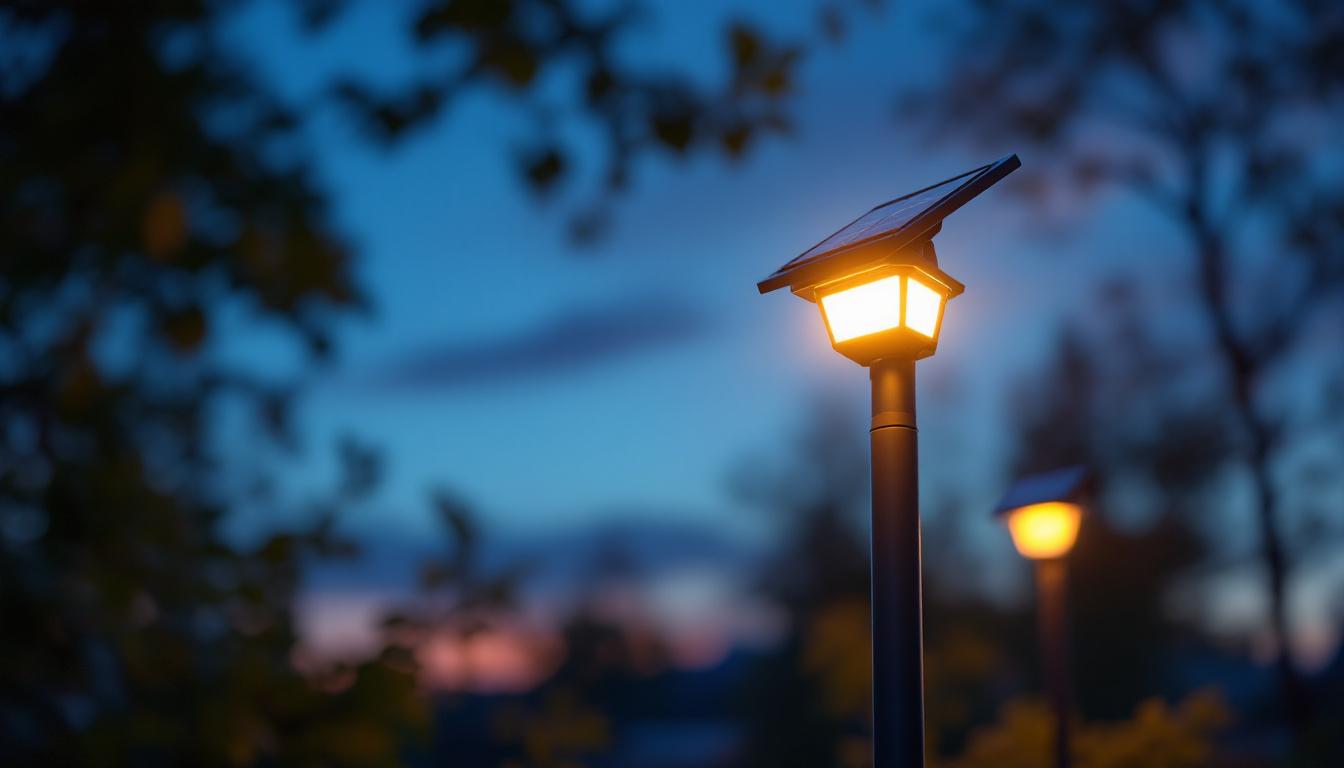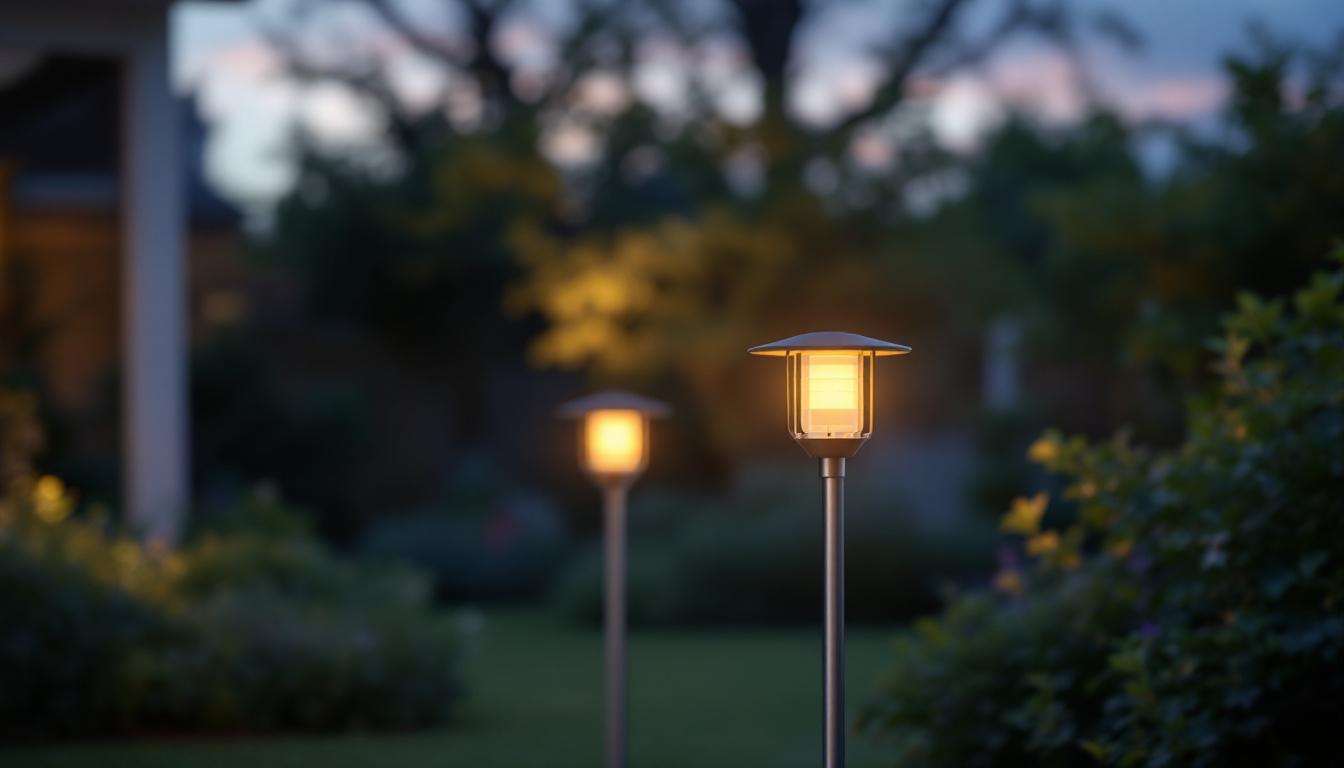
In an era where sustainability meets innovation, solar lamps equipped with sensors have emerged as a game-changer for lighting contractors. These devices not only provide illumination but also contribute to energy efficiency and environmental conservation. As the demand for eco-friendly lighting solutions grows, understanding the intricacies of solar lamps with sensors becomes essential for contractors looking to stay competitive in the market.
Solar lamps with sensors are designed to harness solar energy, converting it into electricity to power LED lights. The integration of sensors enhances their functionality by allowing them to automatically turn on and off based on ambient light levels or motion detection. This section delves into the key components and operational principles of these innovative lighting solutions.
At the heart of every solar lamp with a sensor lies its primary components: the solar panel, battery, LED light, and the sensor itself. The solar panel collects sunlight during the day, converting it into electrical energy stored in the battery. This stored energy powers the LED light during the night or when ambient light levels drop. The sensor plays a crucial role, detecting motion or changes in light, ensuring that the lamp operates efficiently and only when needed. Additionally, many modern solar lamps are equipped with durable, weather-resistant casings, allowing them to withstand various environmental conditions, from heavy rain to extreme heat. This durability not only extends the lifespan of the lamp but also ensures consistent performance throughout the year.
The operational principles of solar lamps with sensors revolve around their ability to adapt to environmental conditions. During daylight, the solar panel charges the battery, while the sensor remains inactive. As dusk approaches, the sensor detects the decrease in light levels and activates the LED light. In motion-sensing models, the lamp remains off until movement is detected, at which point it illuminates, providing security and visibility without wasting energy. Furthermore, some advanced models come with adjustable sensitivity settings, allowing users to customize how responsive the sensor is to movement. This feature is particularly useful in areas with frequent wildlife activity, where overly sensitive sensors might lead to unnecessary lighting. Moreover, the efficiency of LED technology ensures that these lamps provide bright illumination while consuming minimal power, making them an eco-friendly choice for outdoor lighting solutions.
Lighting contractors can leverage solar lamps with sensors for various benefits that align with modern demands for energy efficiency and sustainability. Understanding these advantages can enhance project proposals and client satisfaction.
One of the most significant benefits of solar lamps with sensors is their energy efficiency. By relying on solar power, these lamps eliminate the need for electrical wiring and reduce energy costs. The sensor technology further enhances efficiency by ensuring that lights are only on when necessary, leading to substantial savings over time. This feature is particularly appealing for clients looking to lower their utility bills and reduce their carbon footprint.
Solar lamps are designed to be durable and low-maintenance. With no electrical wiring to worry about and fewer moving parts than traditional lighting systems, these lamps require minimal upkeep. Most models are equipped with long-lasting LED lights and rechargeable batteries, which can last for several years. This reliability makes solar lamps an attractive option for contractors aiming to provide hassle-free solutions to their clients.
Solar lamps with sensors come in various designs and styles, making them suitable for different applications—from residential gardens and pathways to commercial properties and public spaces. Their versatility allows contractors to offer customized solutions that meet the specific needs of their clients. Additionally, the aesthetic appeal of these lamps can enhance the overall look of outdoor spaces, providing both functionality and beauty.
Proper installation is crucial for maximizing the performance of solar lamps with sensors. Lighting contractors must consider several factors to ensure that these lamps operate efficiently and effectively in their intended environments.
Before installation, conducting a thorough site assessment is essential. Contractors should evaluate the amount of sunlight the area receives throughout the day, as this directly impacts the solar panel’s efficiency. Locations with ample direct sunlight are ideal for solar lamps, while shaded areas may require alternative solutions or adjustments to the installation plan.
Placement of solar lamps is key to their performance. Lamps should be positioned to receive maximum sunlight exposure during the day and provide adequate illumination at night. For motion-sensing models, it’s important to consider the detection range and angle of the sensor. Placing the lamp too high or too low can hinder its ability to detect movement effectively.
The height and angle of installation can significantly affect the performance of solar lamps. Generally, a height of 6 to 8 feet is recommended for optimal light distribution and sensor detection. Additionally, angling the solar panel towards the sun can enhance charging efficiency, ensuring that the lamp operates at peak performance throughout the night.
While solar lamps with sensors offer numerous benefits, they are not without challenges. Understanding these potential issues and their solutions can help contractors provide better service and support to their clients.
One of the most common challenges faced by solar lamps is insufficient sunlight, particularly in areas with frequent cloud cover or obstructions like trees and buildings. To address this, contractors can recommend solar lamps with larger solar panels or higher-capacity batteries that can store more energy for use during cloudy days. Additionally, suggesting the installation of lamps in sunnier spots can improve performance.
Over time, the battery performance of solar lamps may degrade, leading to reduced illumination duration. Contractors should educate clients on the importance of regular maintenance, including battery checks and replacements. Offering to provide maintenance services can also enhance client relationships and ensure optimal performance over the lifespan of the product.
Sensor malfunctions can lead to issues such as lights not turning on or off as expected. This can be caused by dirt or debris obstructing the sensor or misalignment during installation. Contractors should emphasize the importance of keeping sensors clean and properly aligned. Providing clear installation instructions and maintenance tips can help clients troubleshoot minor issues independently.
With a myriad of options available in the market, selecting the right solar lamp with a sensor can be daunting for contractors. Understanding the key features and specifications can simplify this process and ensure that the chosen product meets client needs.
The light output, measured in lumens, is a critical factor in determining the effectiveness of a solar lamp. Higher lumen output is necessary for areas requiring brighter illumination, such as driveways or parking lots. Additionally, the color temperature of the light—ranging from warm white to cool white—can influence the ambiance of the space. Contractors should consider the intended use and aesthetic preferences of their clients when selecting these features.
Battery capacity is another essential consideration. A higher capacity battery will store more energy, allowing the lamp to operate longer during the night. Contractors should also pay attention to the charging time, as this affects how quickly the lamp can be ready for use after a cloudy day. Providing clients with options that balance capacity and charging efficiency can enhance satisfaction.
Given that solar lamps are typically installed outdoors, durability and weather resistance are paramount. Contractors should look for products made from high-quality materials that can withstand various weather conditions, including rain, snow, and extreme temperatures. Ensuring that the lamps have appropriate IP ratings for water and dust resistance can prevent premature failure and enhance longevity.
The solar lighting industry is continuously evolving, with new technologies and trends emerging that can influence the future of solar lamps with sensors. Staying informed about these developments can help contractors remain competitive and provide cutting-edge solutions to their clients.
As smart technology becomes more prevalent, the integration of smart features into solar lamps is on the rise. This includes connectivity options that allow users to control their lighting remotely via smartphone apps or home automation systems. Contractors should keep an eye on these advancements, as they can offer clients enhanced control and customization of their lighting solutions.
Advancements in battery technology are also set to improve the performance of solar lamps. Innovations such as lithium-ion batteries offer higher energy density and longer lifespans compared to traditional lead-acid batteries. Contractors should consider recommending products that utilize these newer technologies for better performance and reliability.
As the demand for aesthetically pleasing outdoor lighting solutions grows, manufacturers are focusing on design innovations that blend functionality with style. From sleek modern designs to classic lantern styles, contractors can find solar lamps that cater to diverse client preferences. Staying updated on design trends can help contractors offer attractive options that enhance outdoor spaces.
Solar lamps with sensors represent a significant advancement in outdoor lighting solutions, combining energy efficiency, low maintenance, and versatility. For lighting contractors, mastering the intricacies of these products is essential to meet the evolving needs of clients. By understanding the benefits, installation considerations, common challenges, and future trends, contractors can position themselves as experts in solar lighting solutions. This knowledge not only enhances project proposals but also builds trust and satisfaction among clients, ultimately leading to a successful and sustainable lighting business.
Ready to elevate your lighting projects with the most efficient solar lamps with sensors? Look no further than LumenWholesale, where we provide lighting contractors with the highest quality, spec-grade lighting products at unbeatable wholesale prices. Say goodbye to local distributor markups and hello to superior lighting solutions that meet the highest industry standards. Our extensive selection ensures you find the perfect lighting for every project, and with free shipping on bulk purchases, you get the best value without any hidden fees. Don’t compromise on quality or cost—choose LumenWholesale for a seamless blend of excellence, affordability, and convenience. Start transforming your lighting projects today by visiting our collection at Wholesale Lighting at the Best Value.

Discover the significance of 5000 Kelvin in energy-efficient lighting and how it transforms spaces with its daylight-like brightness.

Discover how the innovative use of laptop computer light can give lighting contractors a competitive edge in winning more bids.

Discover how surface mount LEDs revolutionize safety in lighting installations.

Discover how lighting contractors can enhance their projects with outdoor lamp posts featuring built-in plugs.